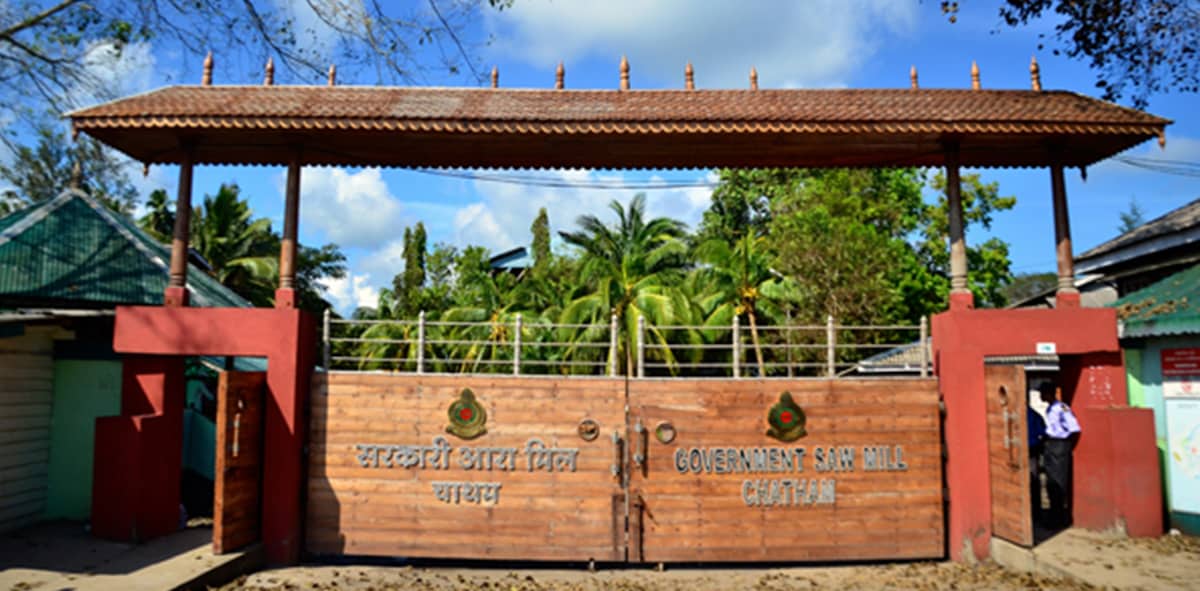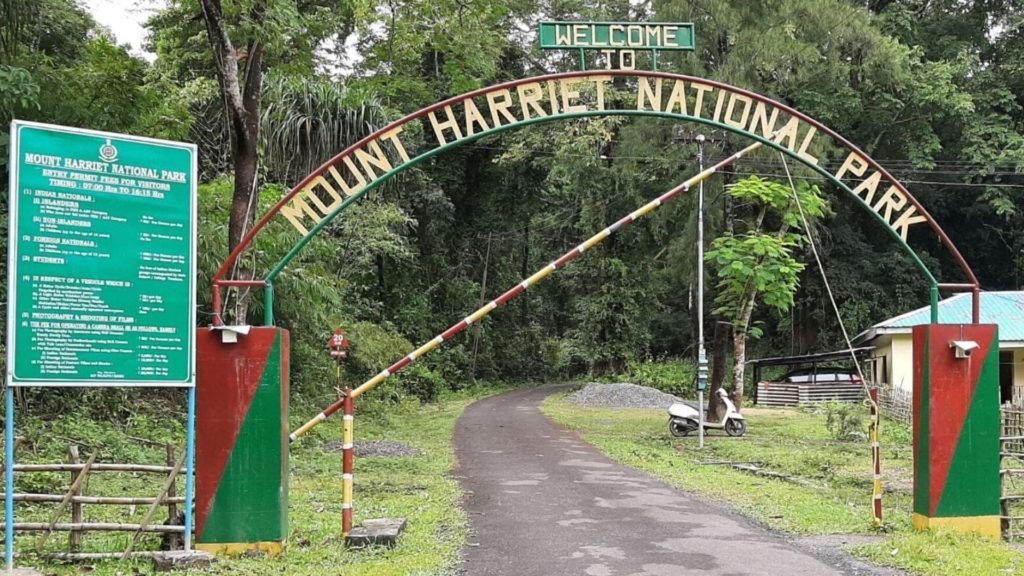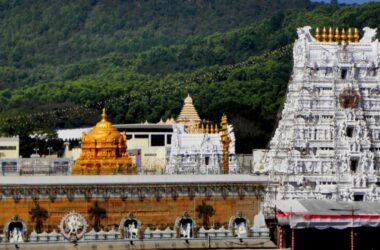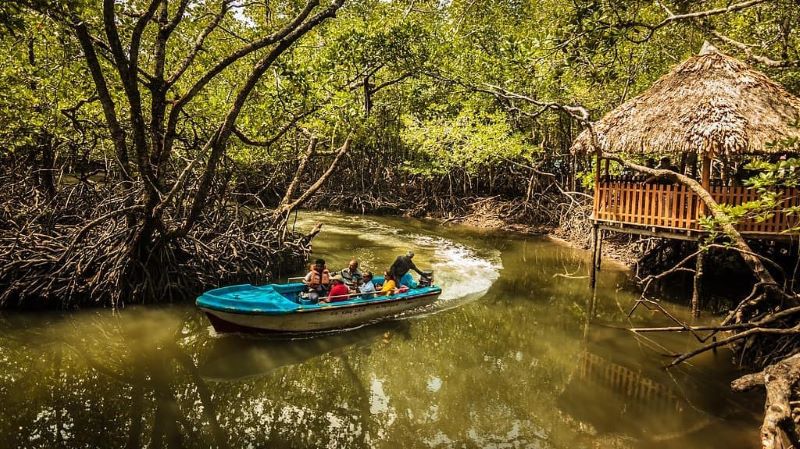Chatham Saw Mill, located in Port Blair, Andaman and Nicobar Islands, is one of the oldest and largest saw mills in the region. Established in 1883, the mill has played a significant role in the development of the islands, providing employment and resources for the local community.
The mill covers an area of 37 acres and has the capacity to process around 300 cubic meters of timber per day. It is equipped with modern machinery and technology to ensure efficient and sustainable logging practices. The mill primarily processes hardwoods such as teak and padauk, which are used for construction, furniture, and other purposes.
The mill is also known for its unique and intricate wooden handicrafts, which are made by skilled artisans using the mill’s resources. These crafts are popular souvenirs among tourists visiting the islands and are exported to various parts of the world.
In addition to its economic contributions, the Chatham Saw Mill also plays an important role in preserving the natural resources of the Andaman and Nicobar Islands. The mill is committed to sustainable logging practices and works closely with the Forest Department to ensure that only the necessary amount of timber is harvested and that replantation efforts are in place.
The Chatham Saw Mill is a unique and important part of the Andaman and Nicobar Islands’ history and economy. It serves as a symbol of the island’s rich natural resources and the ingenuity of the local community. Visitors to the islands can take a tour of the mill to see the process of timber processing and learn more about the mill’s history and impact on the islands.
History of Chatham Saw Mill
The Chatham Saw Mill in Port Blair, Andaman and Nicobar Islands, is one of the oldest and largest saw mills in the region. It was established in 1883 by the British government as a means of exploiting the islands’ rich timber resources. The mill was named after Chatham Island, where it was initially located before being shifted to its present location in Port Blair.
During the early years of operation, the mill primarily processed hardwoods such as teak and padauk, which were used for construction, furniture, and other purposes. The mill played a significant role in the development of the islands, providing employment and resources for the local community.
In the years following Indian independence, the Chatham Saw Mill became a government-run enterprise. However, despite the changing ownership, the mill continued to operate and provide resources for the local community.
In recent years, the mill has been modernized with new machinery and technology to ensure efficient and sustainable logging practices. The mill is committed to sustainable logging practices and works closely with the Forest Department to ensure that only the necessary amount of timber is harvested and that replantation efforts are in place.
Overall, the Chatham Saw Mill has a rich history dating back to the British colonial era and has played an important role in the development and economy of the Andaman and Nicobar Islands. Today it continues to be a vital part of the islands’ resources and cultural heritage.
Things to see at Chatham Saw Mill
The Chatham Saw Mill in Port Blair offers visitors a glimpse into the history and operations of one of the oldest and largest saw mills in the Andaman and Nicobar Islands. Some of the things to see at the mill include:
- The mill itself: Visitors can take a tour of the mill to see the process of timber processing and learn about the different types of machinery and equipment used.
- Wooden Handicrafts: Visitors can see the intricate wooden handicrafts made by skilled artisans using the mill’s resources.
- Timber Yard: Visitors can also see the different types of hardwoods such as teak and padauk, which are stored in the Timber Yard.
- Sustainable logging practices: Visitors can learn about the mill’s commitment to sustainable logging practices and how they work closely with the Forest Department to ensure that only the necessary amount of timber is harvested and that replantation efforts are in place.
- History and Impact: Visitors can learn about the mill’s history and the impact it has had on the Andaman and Nicobar Islands’ economy and community.
- Souvenirs: Visitors can purchase souvenirs such as wooden handicrafts, wooden articles, and other items.
Overall, a visit to the Chatham Saw Mill provides a unique and educational experience, offering visitors the opportunity to learn about the islands’ rich natural resources and the ingenuity of the local community.
Interiors of Chatham Saw Mill
The Chatham Saw Mill in Port Blair, Andaman and Nicobar Islands, is a large and complex industrial facility that covers an area of 37 acres. The interiors of the mill are divided into several main areas, including:
- Logging Yard: This is where logs are delivered and sorted before being processed in the mill. Visitors can see the different types of hardwoods, such as teak and padauk, that are used in the mill’s operations.
- Sawing Area: This is where the logs are cut and processed into lumber using various types of saws and other machinery. Visitors can see the large saws in action and learn about the different cutting techniques used.
- Drying Area: After the logs are cut, they are then dried before being sent to the planning and finishing areas. Visitors can see the large kilns and other equipment used in the drying process.
- Planning and Finishing Area: In this area, the dried lumber is smoothed, planned, and finished to the desired specifications. Visitors can see the various types of planers and other machinery in action.
- Handicraft Workshop: This is where the mill’s unique and intricate wooden handicrafts are made by skilled artisans. Visitors can see the artisans at work and view the finished products.
- Timber Yard: This is where the finished lumber is stored before being sent for further processing or shipment. Visitors can see the different types of hardwoods, such as teak and padauk, that are stored in the Timber Yard.
Overall, a visit to the Chatham Saw Mill provides a unique and educational experience, offering visitors the opportunity to see the various stages of the milling process and learn about the machinery and techniques used.
Tips for Visiting Chatham Saw Mill
Here are some tips for visiting the Chatham Saw Mill in Port Blair, Andaman, and Nicobar Islands:
- Plan ahead: Contact the mill’s management in advance to schedule a tour and ensure that the mill is open and operational on the day of your visit.
- Wear appropriate clothing: The mill is an industrial facility, so it is recommended to wear closed-toe shoes, long pants, and clothing that can withstand sawdust and other debris.
- Respect safety guidelines: Follow all safety guidelines provided by the mill’s management and staff, including wearing protective gear, such as goggles and earplugs, when necessary.
- Bring a camera: Visitors are allowed to take photographs of the mill and its operations, but make sure to get permission from the staff before taking pictures of the artisans or the handicraft workshop.
- Learn about the mill’s history and operations: The mill’s management can provide you with a lot of information about the mill’s history and operations, be sure to ask questions and take the opportunity to learn more about the mill.
- Be mindful of the noise: The mill is an industrial facility and can be quite loud, so visitors with sensitive hearing may want to bring earplugs.
- Be respectful of the workers: The mill is a working facility, and visitors should be mindful of the workers and their safety while they are working.
By following these tips, visitors can have an enjoyable and educational visit to the Chatham Saw Mill, while also respecting the safety and operations of the mill.
Facts About Chatham Saw Mill
Here are some facts about the Chatham Saw Mill in Port Blair, Andaman and Nicobar Islands:
- The mill was established in 1883 by the British government as a means of exploiting the islands’ rich timber resources.
- The mill covers an area of 37 acres and has the capacity to process around 300 cubic meters of timber per day.
- The mill primarily processes hardwoods such as teak and padauk, which are used for construction, furniture, and other purposes.
- The mill is also known for its unique and intricate wooden handicrafts, which are made by skilled artisans using the mill’s resources.
- The mill is committed to sustainable logging practices and works closely with the Forest Department to ensure that only the necessary amount of timber is harvested and that replantation efforts are in place.
- The mill is a government-run enterprise and is open to visitors, with guided tours available to learn about the mill’s history and operations.
- The mill’s interiors are divided into several main areas such as Logging Yard, Sawing Area, Drying Area, planning and Finishing Area, Handicraft Workshop, and Timber Yard.
- The mill is an important part of the Andaman and Nicobar Islands’ economy and cultural heritage, providing employment and resources for the local community.
- The mill is located in Port Blair, the capital of Andaman and Nicobar Island, and is a popular tourist destination.
- The mill is one of the oldest and largest saw mills in the region and has been modernized with new machinery and technology to ensure efficient and sustainable logging practices.
Similar Articles
Frequently Asked Questions About Chatham Saw Mill
Here are some frequently asked questions about the Chatham Saw Mill in Port Blair, Andaman, and Nicobar Islands:
Q. What are the main products produced at the mill?
A – The main products produced at the Chatham Saw Mill are hardwood lumber and wooden handicrafts, primarily made from teak and padauk.
Q. Is the mill open to visitors?
A – Yes, the mill is open to visitors, however, it is recommended to contact the mill’s management in advance to schedule a tour and ensure that the mill is open and operational on the day of your visit.
Q. Is there an admission fee for visiting the mill?
A – There is no admission fee for visiting the Chatham Saw Mill.
Q. Are guided tours available?
A – Yes, guided tours are available, and the mill’s management can provide visitors with information about the mill’s history and operations.
Q. Are there any restrictions on photography or videography?
A – Photography is allowed within the mill, but it is recommended to get permission from the staff before taking pictures of the artisans or the handicraft workshop.
Q. Are there any souvenirs available for purchase?
A – Yes, visitors can purchase souvenirs such as wooden handicrafts, wooden articles, and other items.
Q. Are there any special instructions for visiting the mill?
A – Visitors should wear appropriate clothing and closed-toe shoes, follow all safety guidelines provided by the mill’s management and staff, and be mindful of the workers and their safety while they are working.









